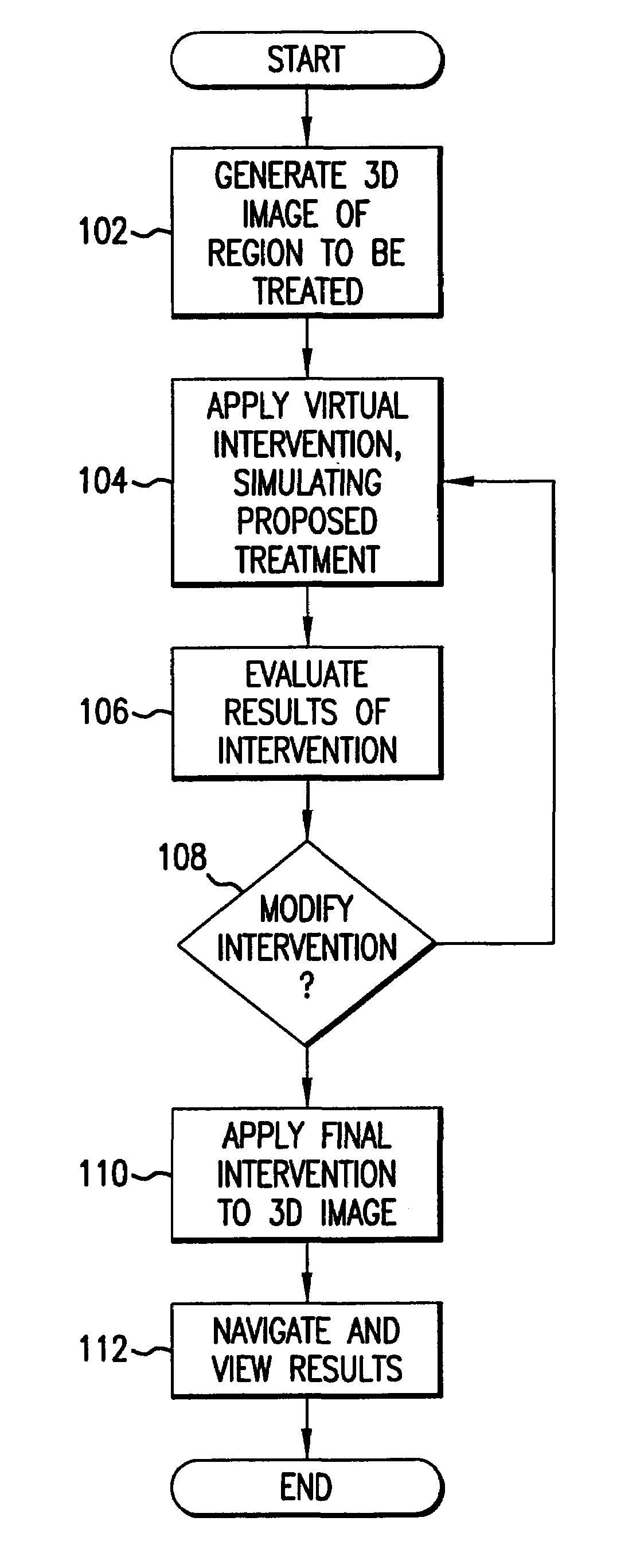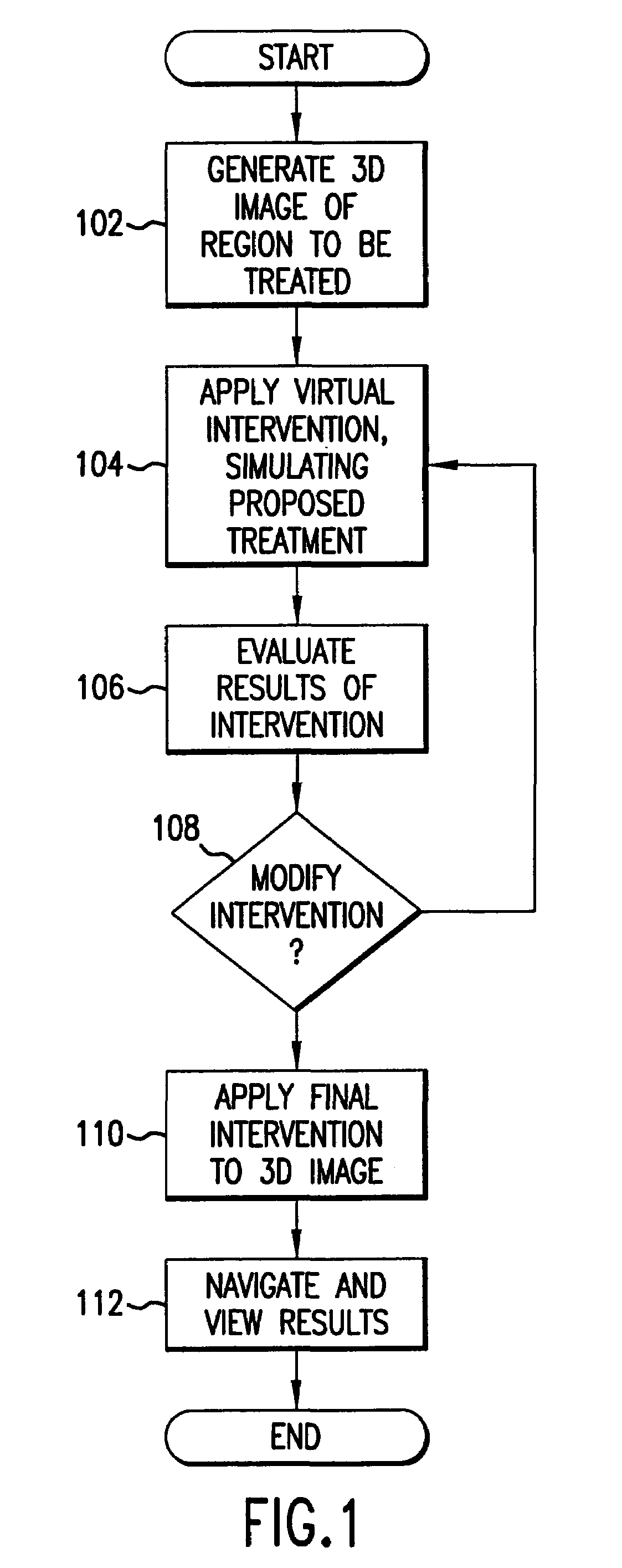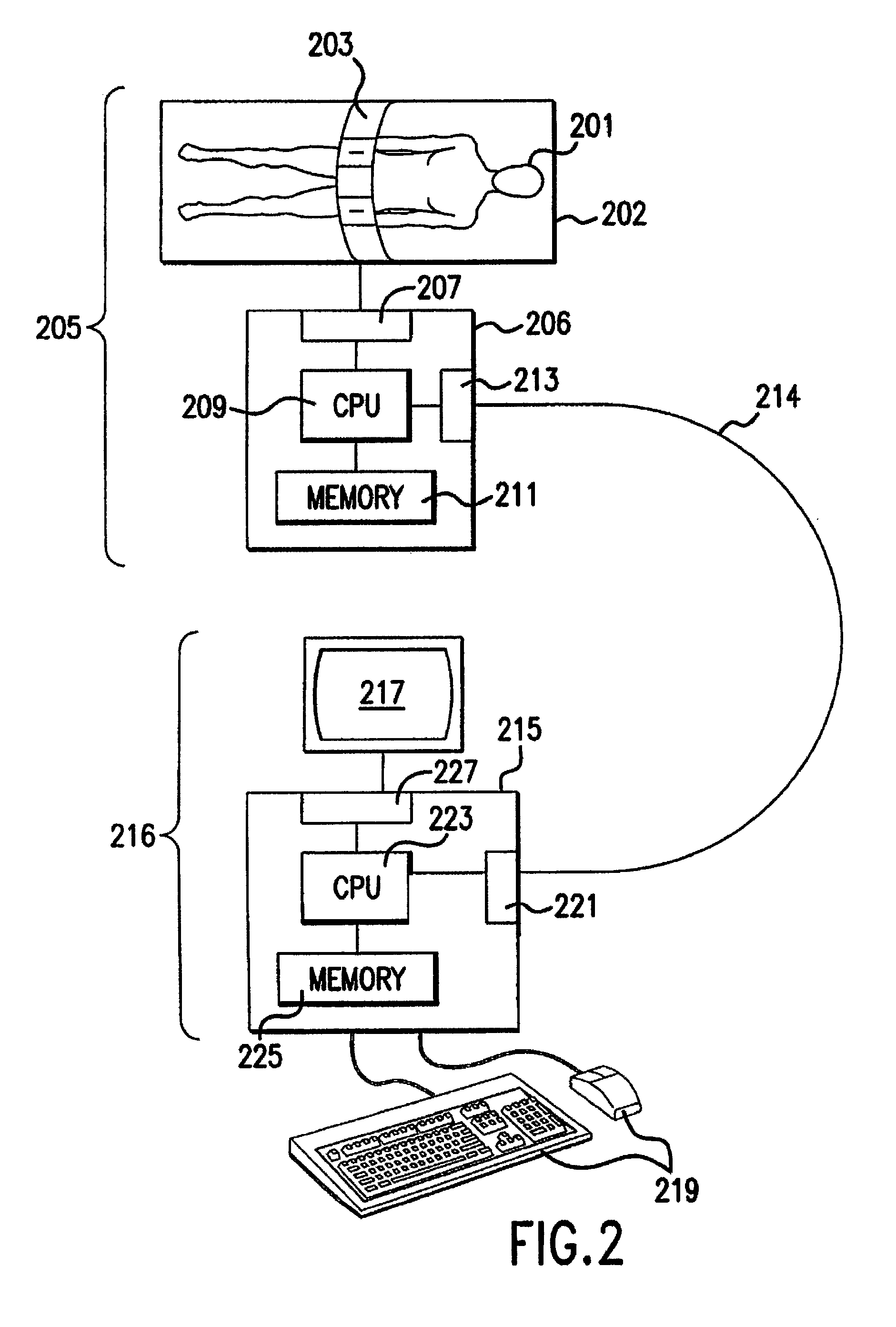Computer aided treatment planning
a computer and treatment planning technology, applied in the field of surgical planning, can solve the problems of limited spatial relationship between 2d ct and important structures, difficult examination of ear, severe conductive hearing loss, etc., and achieve the effect of high degree of risk
- Summary
- Abstract
- Description
- Claims
- Application Information
AI Technical Summary
Benefits of technology
Problems solved by technology
Method used
Image
Examples
Embodiment Construction
[0037]FIG. 1 is a flow chart which illustrates an overview of the present method of computer aided treatment planning which is generally performed on a computer based system, such as that illustrated in FIG. 2. The invention will be described in terms of medical applications performed on human patients and in the context of medical treatment, such as surgery, prosthesis implantation, biopsy, medication, therapeutic radiation, therapeutic ultrasound and the like. It will be appreciated, however, that the invention is not limited to human patients, nor to the exemplary list of treatments referenced. The term treatment is used to mean an intervention in a region, such as but not limited to tissue, that is intended to effect an alteration of the region.
[0038]Referring to FIG. 1, the method includes the initial step of generating a three dimensional (3D) image representation of a region for which some form of medical treatment or intervention is contemplated (step 102). Generating such a...
PUM
 Login to View More
Login to View More Abstract
Description
Claims
Application Information
 Login to View More
Login to View More - R&D
- Intellectual Property
- Life Sciences
- Materials
- Tech Scout
- Unparalleled Data Quality
- Higher Quality Content
- 60% Fewer Hallucinations
Browse by: Latest US Patents, China's latest patents, Technical Efficacy Thesaurus, Application Domain, Technology Topic, Popular Technical Reports.
© 2025 PatSnap. All rights reserved.Legal|Privacy policy|Modern Slavery Act Transparency Statement|Sitemap|About US| Contact US: help@patsnap.com



